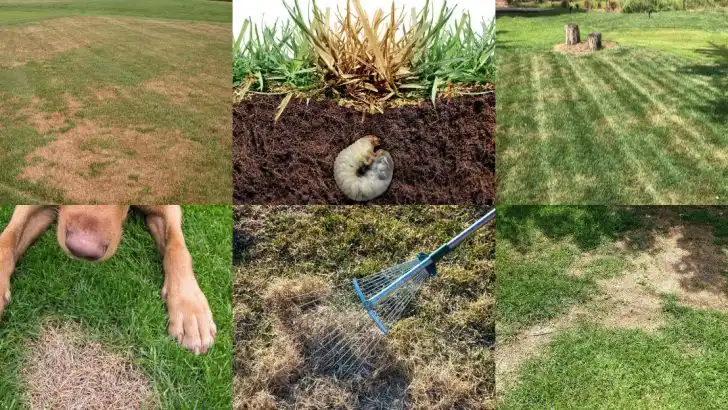Your lawn isn’t dying—it’s screaming. Those brown spots?
They’re more than just a cosmetic issue. They’re the lawn’s version of an SOS flare, and they’re popping up faster than you can say “sprinkler system.
”Maybe it’s a dog with poor aim. Maybe it’s that one scorching afternoon you didn’t see coming.
Or maybe, just maybe, your grass is under attack from something far sneakier—like an invisible fungus or a misguided mower. Before you panic and start digging it all up, take a breath.
We’ve rounded up the most common culprits behind those patchy disasters—and how to fight back like a backyard warrior.
Improper Watering
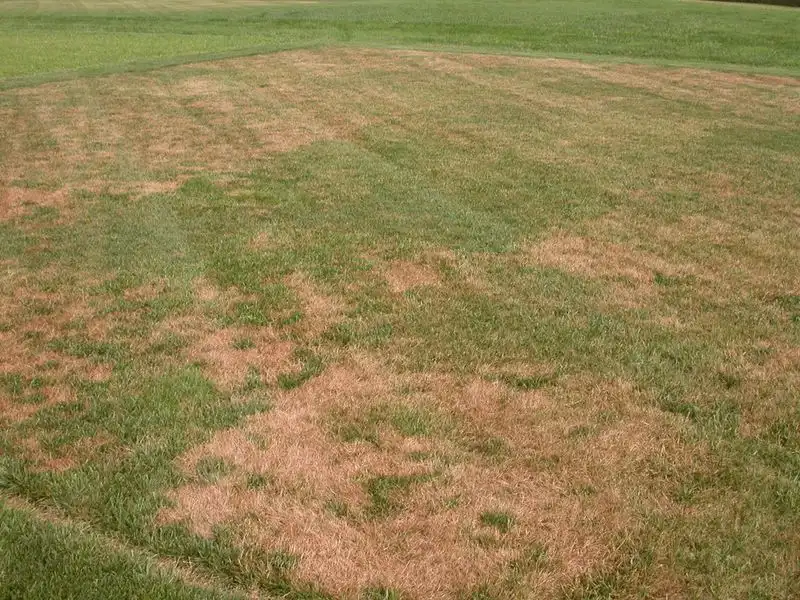
The water needs of your grass change with the seasons. Over-watering can drown roots, while under-watering leaves them thirsty.
Both situations lead to brown spots. The key is finding a balance.
Water deeply but infrequently, ideally in the early morning to avoid evaporation. Use a rain gauge to monitor rainfall and adjust accordingly.
Sprinklers can offer uniform coverage, but remember to check for blockages. Consistent observation helps in identifying dry patches early.
Pest Infestation

Beneath the green surface, pests like grubs and chinch bugs feast on grassroots. Their munching leads to browning and thinning turf.
Regular inspection is vital; look for wilting and uneven grass. Biological control, like introducing beneficial nematodes, can help.
Chemical treatments are available, but use sparingly. Prevention includes maintaining grass health to make it less inviting to pests.
Aerating the soil can also deter infestations by reducing compaction.
Fungal Diseases
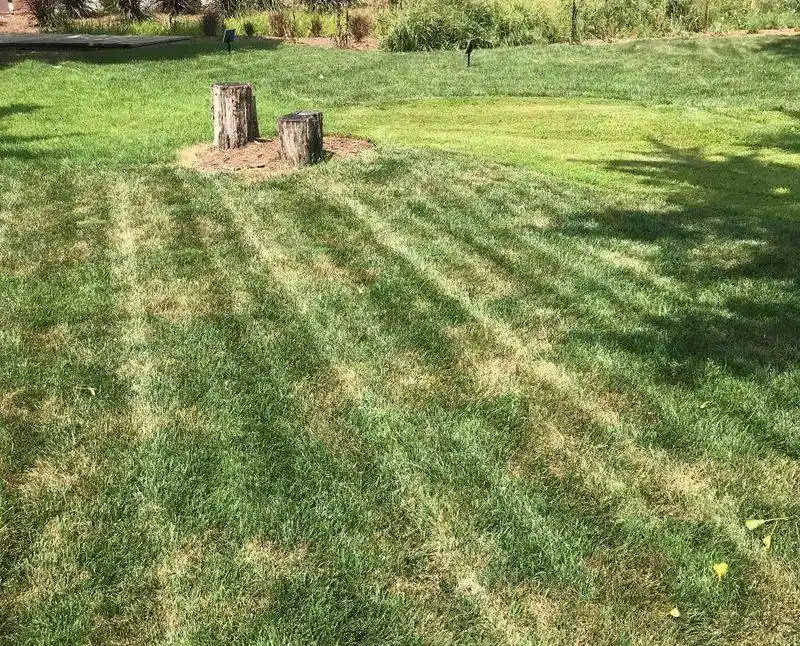
Fungal diseases thrive in warm, humid conditions. Symptoms include circular brown spots and visible spores.
To combat fungi, ensure proper air circulation by mowing regularly. Avoid watering at night, as dampness encourages growth.
Fungicides can be effective if applied early. Choosing disease-resistant grass types is another strategy.
Routine lawn care practices, like dethatching and aeration, create an environment less conducive to fungi.
Dog Urine Damage

Your furry friend’s bathroom habits might be the culprit. Dog urine contains nitrogen, which can burn grass, leading to brown spots.
Training your pet to use a specific area can minimize damage. Watering the area immediately after your dog goes can help dilute the nitrogen.
Special lawn mixes are available that can better tolerate pet urine. A healthy lawn with regular maintenance will recover faster from these spots.
Thatch Buildup
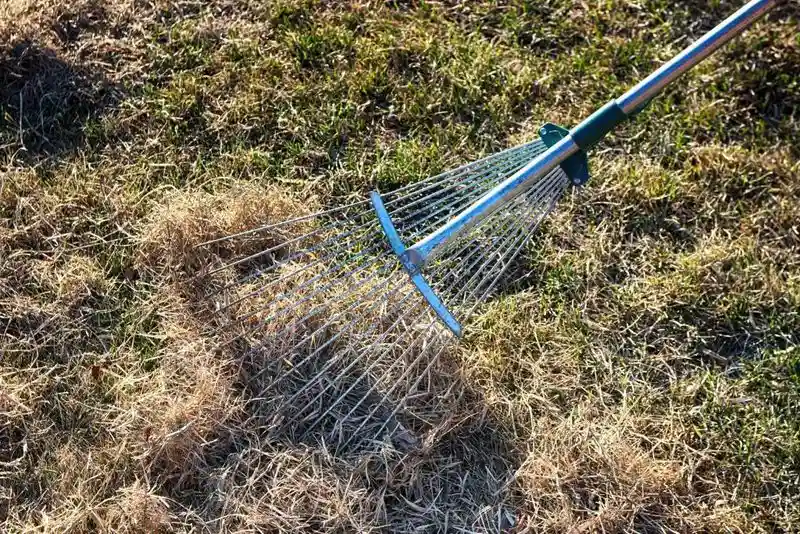
A thick layer of thatch can choke your lawn, preventing water and nutrients from reaching roots. This results in brown, unhealthy patches.
Regular dethatching is essential, especially in spring or fall. Use a dethatching rake or machine for large areas.
Aeration complements dethatching by improving soil permeability. Choose grass varieties less prone to thatch.
Regular mowing at the right height prevents excessive thatch formation, maintaining a vibrant lawn.
Soil Compaction
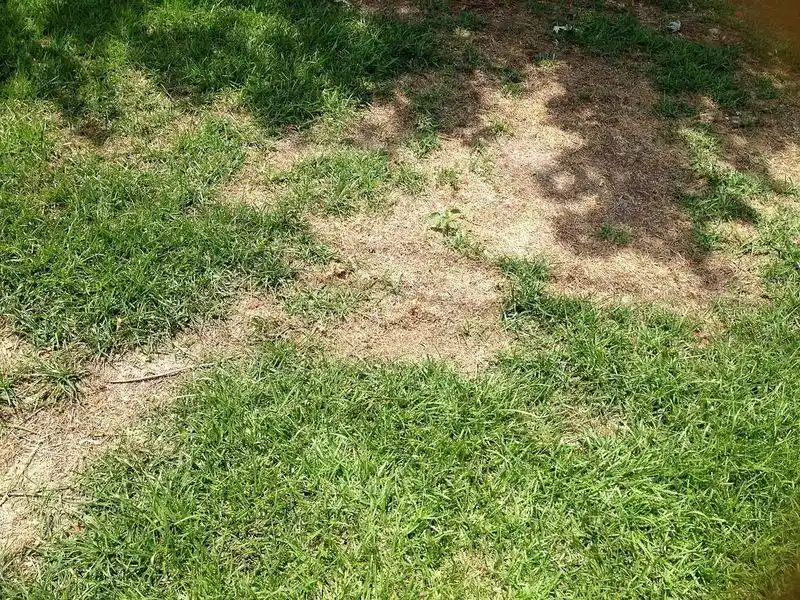
Heavy foot traffic compresses soil, hindering water absorption and root growth. This compaction leads to brown, patchy areas.
Aerating your lawn annually can alleviate this issue. Core aerators pull out plugs of soil, allowing air and nutrients to penetrate deeper.
Redirecting foot traffic or creating paths can also help. Regularly checking for compacted areas ensures timely intervention.
Healthy, resilient turf develops when soil structure is maintained.
Nutrient Deficiencies
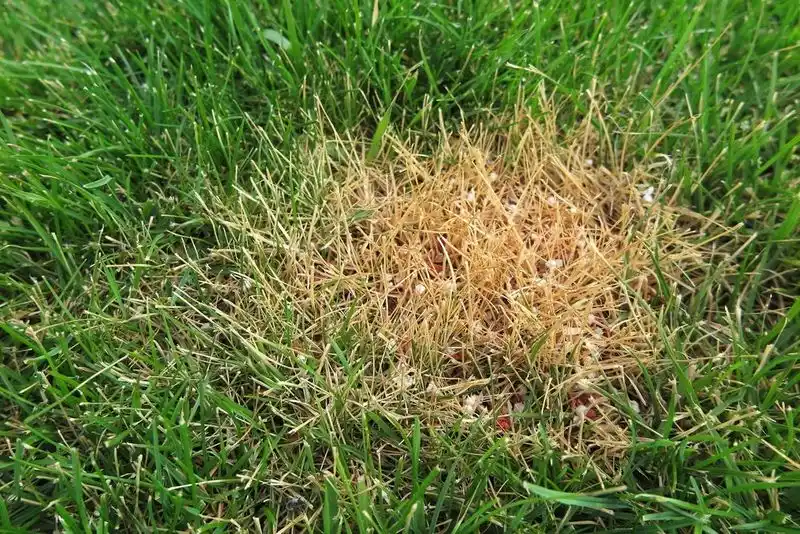
Nutrient imbalances manifest as discolored, patchy grass. A soil test reveals deficiencies, letting you tailor fertilization.
Nitrogen, phosphorus, and potassium are vital for healthy growth. Applying fertilizer in proper ratios restores balance.
Organic options like compost provide a slow-release nutrient source. Over-fertilization can also cause damage, so follow package instructions closely.
Regular testing and adjustment keep your lawn vibrant and green.
Mowing Mistakes

Mowing too short stresses grass, exposing roots and soil to the sun. This stress causes browning and weakens the lawn’s resilience.
Adjusting the mower height prevents this issue. Grass should be cut no more than one-third of its length.
Sharp blades are essential for a clean cut, while dull blades tear and damage. Leaving clippings on the lawn can also return nutrients to the soil.
Regular maintenance keeps grass thriving and resilient.
Heat and Drought Stress
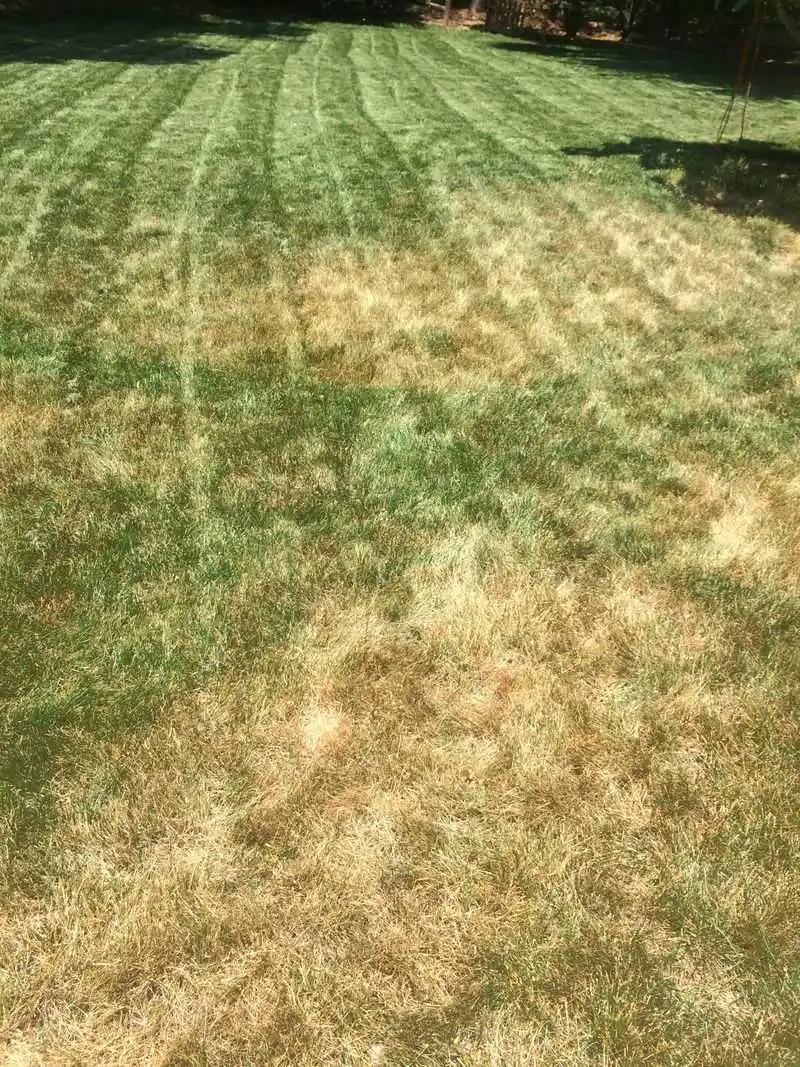
High temperatures and lack of water combine to stress your lawn, leading to brown patches. Deep, infrequent watering encourages roots to grow deeper.
Mulching can help retain soil moisture. Consider drought-tolerant grass varieties for arid regions.
During heatwaves, avoid mowing and fertilizing, as stressed grass is more susceptible to damage. Regular care and observation help your lawn weather difficult conditions, keeping it green and healthy.
Poor Soil Quality
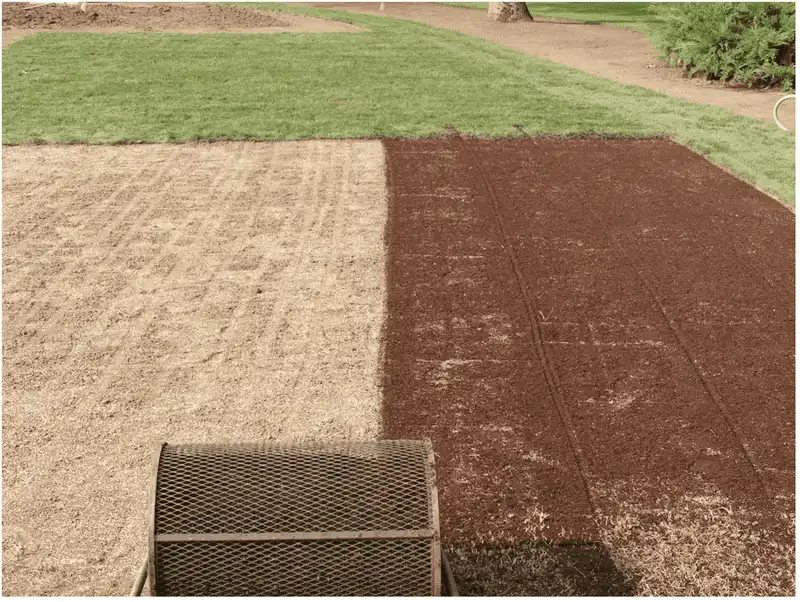
Healthy grass starts with good soil. Poor quality soil lacks structure and nutrients, leading to brown patches.
Amending soil with organic matter enhances its fertility and drainage. Regularly testing soil pH helps maintain an ideal environment for grass.
Lime or sulfur can adjust pH levels if necessary. Compost or well-rotted manure improves soil condition, promoting healthy root development.
Investing time in soil quality pays off with a vibrant lawn.
Chemical Burns
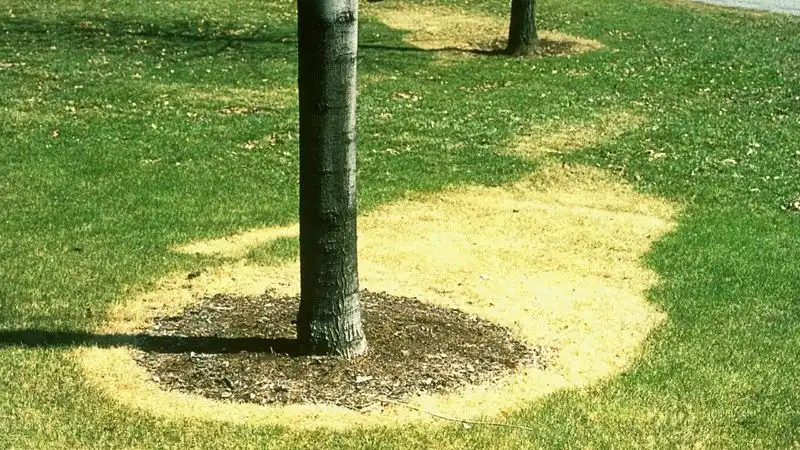
Improper use of fertilizers and herbicides can scorch your grass. Brown spots appear where chemicals have affected growth.
Following product instructions precisely prevents this. Using organic products minimizes the risk of chemical burns.
Watering before and after application can dilute chemicals. Always test a small area first.
Regular observation helps catch potential issues early, protecting your lawn from harm.
Shade Stress

Grass needs sunlight to thrive, but too much shade causes thinning and browning. Trimming branches and reducing obstacles increases light penetration.
Consider shade-tolerant grass species for heavily shaded areas. Ground covers like moss or ferns may be better suited for dense shade.
Balancing sunlight ensures a robust lawn. Regular monitoring helps in adapting to changing light conditions, keeping the grass green and strong.
Improper pH Levels
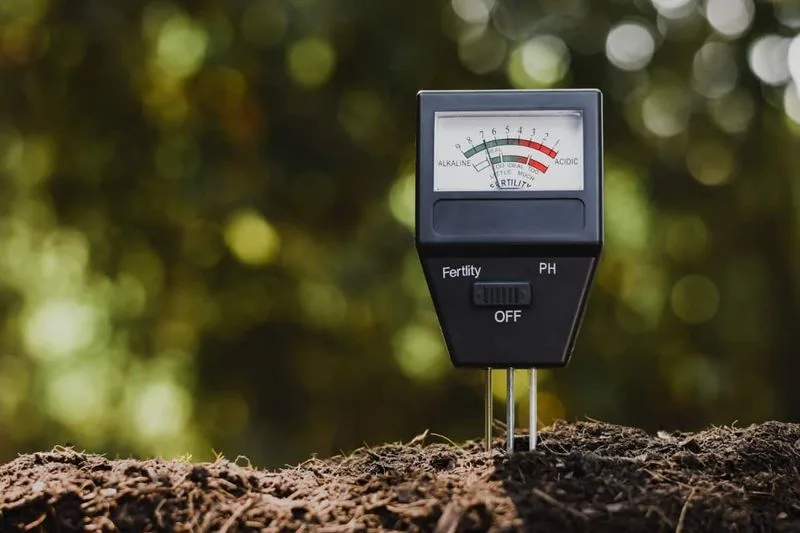
Soil pH affects nutrient absorption, crucial for healthy grass. Improper pH levels lead to browning and weak growth.
Regular soil testing reveals pH imbalances. Lime can raise pH, while sulfur lowers it, depending on your needs.
Maintaining a balanced pH ensures your grass can access essential nutrients. Adjustments should be made gradually to avoid shocking the system.
Consistent care and testing keep your lawn thriving.

